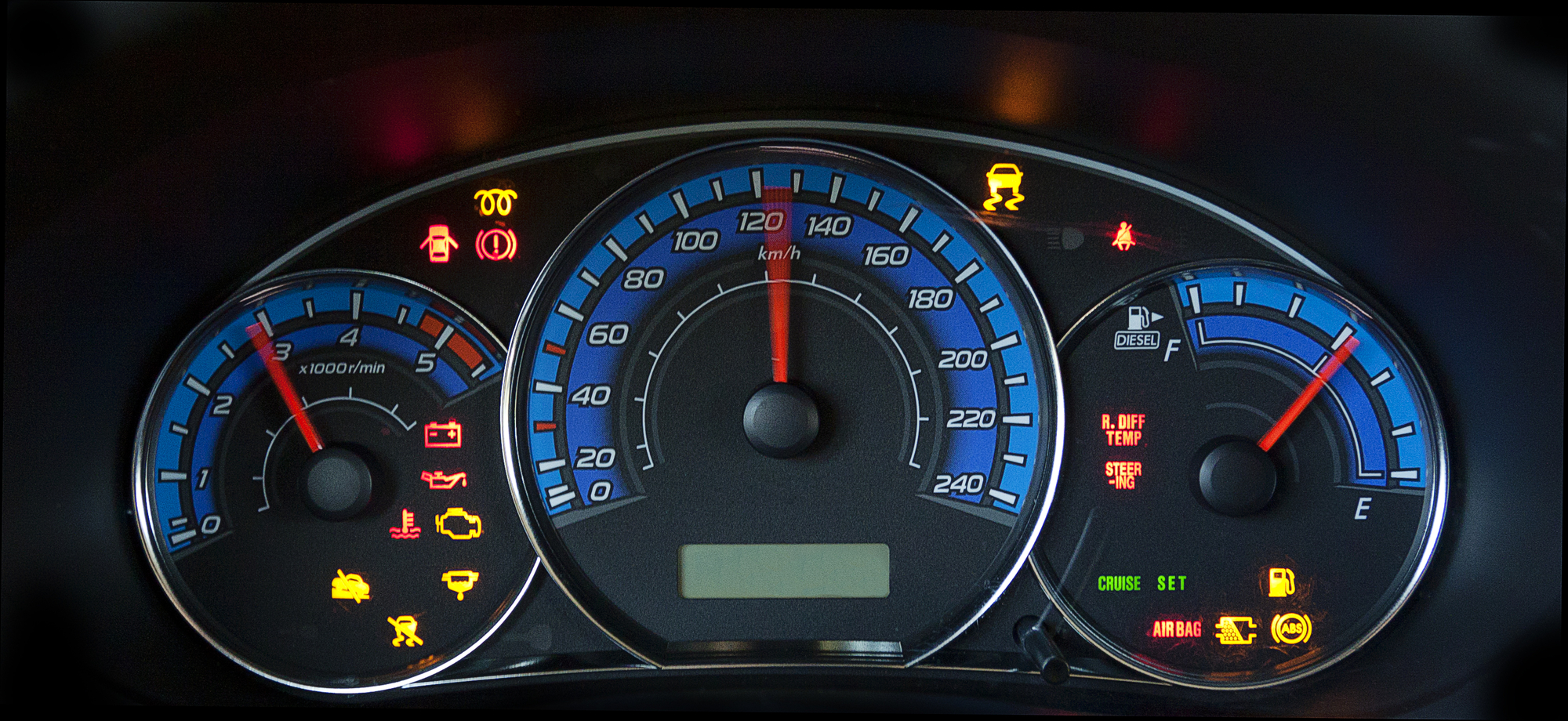What a dashboard light in your car indicates shouldn’t come as a surprise, but the actual meaning of the message could. As vehicles become more complicated, manufacturers need to add more dashboard light symbols to safeguard the vehicle and driver. Some of the newer dashboard warning lights are far from intuitive, especially if the vehicle has the most recent active safety systems. Following is a list of some of the most common dashboard lights and their meanings.
What Dashboard Light Colors Mean
Dashboard lights generally come in three colors, red, green, and yellow. Typically, a red dashboard light means there’s a problem that requires your immediate attention (meaning it’s probably not safe to continue driving it). A yellow light usually means that you should have something looked at soon, but it’s not an urgent problem. A green dashboard light lets you know that a feature in the specified system is on and working appropriately. This is the case with other dashboard lights as well – a good example being the traction control system flickering amber when it’s handling a slippery road.
Check Engine Light
The check engine light can come on for several reasons. For example, it can signal a serious issue (overheating, low oil pressure, etc.), requiring you to pull over right away. Other times, this light will appear if your gas cap is open, loose, or cracked, causing fuel to evaporate. If this light appears, play it safe by pulling over and taking a look at the gas cap or anything else that may seem out of place. If the check engine light is flashing, stop driving the car immediately. A flashing check engine light indicates that you have a major problem that could result in serious damage if you ignore it.
Tire Pressure Light
Also known as the TPMS (tire pressure monitoring system) symbol, the tire pressure light indicates that the pressure in one or more of your tires is too high or low and needs to be attended to. Driving on tires with the wrong pressure is unsafe and can lead to additional damage to the vehicle. Tire pressure should be between 30 and 35 psi but check the vehicle’s manual to confirm.
Oil Pressure Light
This dashboard light indicates that there’s an issue with your vehicle’s oil pressure system. Potential problems could be that you’re running low on oil, or the oil pump isn’t distributing enough fluid to lubricate the vehicle’s working parts adequately. Oil pressure system problems should be resolved as soon as possible because the engine will eventually fail without proper lubrication.
Brake System Light
This dashboard light can indicate several conditions including, brake system problems, the parking brake is on, or a possible ABS (anti-lock braking system) problem. First, confirm that the parking brake is fully released and that the brake fluid is at the right level. Any other brake system problems should be checked out by an expert (preferably ASE certified) mechanic.
Anti-lock Brake (ABS) Light
If your vehicle has anti-lock brakes, every time you turn it on, the system does a “self-check,” which can cause the ABS light to come on for a few seconds. If the light goes away immediately, the system is in good working order. If it’s an anti-lock brake problem, the ABS warning light will come on while you’re driving. ABS issues should be diagnosed right away.
Traction Control Malfunction Light
This dashboard light indicates that the vehicle’s traction control system might have a damaged or broken sensor or another malfunction. In some vehicles, the same control component operates the traction control system and the anti-lock brakes, so the dashboard light might come on when the problem is ABS related.
Battery Dashboard Light
This symbol signifies that there’s a problem with the vehicle’s charging system. Strangely enough, the cause may not be the battery. Although it could indicate that a battery cable is loose or damaged, it could also be a broken alternator belt. If it’s actually a problem with the battery, you may notice the headlights or clock dimming before you have more significant problems like trouble starting the car.
Airbag Light
The airbag dashboard light, also known as SRS (supplemental restraint system) light, will come on if there’s something wrong with any of your airbags or the system in general. When this light comes on, it means that the airbags may not deploy if you’re in a crash, or that the seatbelts aren’t tightened properly.
Always reference your owner’s manual if you’re not 100% sure what the dashboard light signifies. While dashboard lights indicate that a problem has developed inside of the vehicle’s system, it doesn’t pinpoint the system or item that’s having problems. The important thing to keep in mind is that a dashboard light could be a warning of a serious problem that could damage important engine components.
Finding out why a warning light is on will not only help keep you safe but save you from costly repairs down the road. Contact us if you see a dashboard light on your car or truck.





